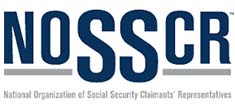Can I obtain VA disability benefits for
post-traumatic stress or a different anxiety disorder?
Yes, VA disability benefits for post-traumatic stress or other anxiety disorder may be available.
You will need to prove that (a) you were in the military, (b) your post-traumatic stress or other anxiety disorder originated or was aggravated while you were on active duty, (c) you were continuously treated for your post-traumatic stress or other anxiety disorder since leaving the service (unless you are filing your disability claim within one year of leaving the service or your condition has been chronic), and (d) you are currently disabled by your post-traumatic stress or other anxiety disorder.
About anxiety disorders
Anxiety is fear associated with the expectation of being physically or mentally injured by some real or imagined danger. Anxiety disorders include:
Generalized anxiety disorder;
Various phobic disorders (simple phobia, social phobia, agoraphobia);
Panic disorder;
Obsessive compulsive disorder (OCD);
Post-traumatic stress disorder (PTSD).
Information from family and friends is crucial to disability determination
It is critically important for family members or other caregivers to provide as much detailed information as possible about specific tasks you can or cannot do.
Mental health clinics will often refuse to provide clinical records that are useful in evaluating how a mental disorder has developed over time. They might simply write a letter summarizing what they think the VA needs to know.
If you are receiving medication, information about side-effects must come from a medical doctor, because a psychologist is not competent to evaluate that matter. However, it is also important for the same kind of information and opinions to be obtained from family or other caregivers, to make sure that nothing is missed. The caregivers may have noticed important facts that can be brought to the attention of the treating psychiatrist and the VA.
Generalized anxiety disorder
Generalized anxiety disorder, which is a common mental disorder, rarely produces more than mild impairment in functioning, but there are exceptions. If several of the following items are present, the condition is considered severe:
1. Motor tension, which refers to the observable physical expression of anxiety, e.g., restlessness, jumpiness, trembling, fidgeting, strained appearance to the face, and the feeling that one is uptight and cannot relax. Such a person appears nervous.
2. Autonomic hyperactivity. Autonomic functions are those automatic functions carried out by the body that are not usually under conscious control. In anxiety there is increased activation of the sympathetic nervous system, preparing the body for impending physical stress. This reaction is normal if a person faces a serious threat that calls for a decision to fight or run. But in inappropriate anxiety, autonomic arousal exceeds the real degree of threat.
Hormones are released (epinephrine and norepinephrine from the adrenal glands) which increase the rate and force of heartbeat, and raise the blood pressure. The mouth may feel dry and the stomach queasy. There is increased sweating (“clammy hands”) and faster breathing.
A sustained condition of sympathetic autonomic arousal is not healthy for the body, and not comfortable for the person experiencing it. In fact, studies have demonstrated that cortisol released during stress impairs memory and other cognitive functions by adverse effect on the hippocampus in the brain. Chronic stress may permanently injure the brain, although this is not a theory that can easily be tested.
3. Apprehensive expectation. This state involves a preoccupation with possible negative events, either for oneself or others. Such a person worries excessively and is in continuous anticipation of something going wrong without any significant indication of a realistic threat, i.e., it is a continuous state of fear.
4. Vigilance and scanning, which are a result of apprehensive expectation. The environment is scanned with hyper-attentiveness, so that threats cannot approach unseen. This state would be appropriate for a soldier moving through the jungle looking for booby traps, but not when the threat is unreal. If a threat cannot be selectively and realistically identified, then there is the possibility it may approach anywhere at any time. Such a person constantly feels on edge, irritable, distractible, and has sleep disturbance which provides inadequate rest.
Phobias
A phobia is a persistent and irrational fear of a specific object, activity, or situation which results in a compelling desire to avoid the dreaded object, activity, or situation. The word “irrational” is important. Realistic fears of things that can produce harm are not phobias.
Agoraphobia may be an irrational fear of being alone, or fear of being away from home in some public place. The individual does not feel “safe” and fear of being in crowds is one of the most common forms. Severe agoraphobia understandably produces marked restriction of activities and interests to those that can be performed in the home, though the condition may wax and wane in severity.
A person with social phobia has an irrational fear of social situations, manifested by desire to avoid circumstances in which interaction with other people is possible. The person fears being perceived as in some way inferior with consequent humiliation or embarrassment, and, as a consequence, avoids social situations. The disorder is uncommon and usually not incapacitating. An example might be an extreme fear of public speaking. If the disorder causes fear of a large number of possible social situations, then severe functional impairment would result.
With simple phobia or specific phobia, the person has a highly specific fear. Examples might be fear of heights, closed places, or certain animals. The degree of functional loss depends on how easy it is to avoid the phobic object. If a person feared volcanoes, it would not be difficult to avoid them. On the other hand, fear of airplanes or automobiles might have more serious functional consequences. Most simple phobias are not very limiting functionally, because the dreaded object can be easily avoided.
Panic disorder
Panic disorder is characterized by the sudden, usually unpredictable, and very intense feeling of anxiety, fear, terror or impending doom. Accompanying effects are autonomic sympathetic arousal associated with anxiety and fear, such as sweating, palpitations, and trembling. Attacks usually only last a few minutes, and in some cases may play a role in the development of agoraphobia. The disorder is common, but not functionally incapacitating unless the individual suffers from unusually frequent or prolonged attacks.
Obsessive compulsive disorder (OCD)
Obsessions are persistent thoughts or ideas that enter the mind involuntarily, and are considered as either meaningless or repulsive to the person’s viewpoint. The most frequent obsessive thoughts involve violence, fear of contamination (especially the hands), and doubt (repeatedly wondering if some action was performed [such as locking a door], or whether some event took place).
Compulsions are repetitive behaviors, done either by some set of rules or always done in the same way.
Although the compulsive behavior may appear to have purpose in and of itself, that is not the reason for its performance. Rather, the purpose of compulsion is to relieve the discomfort of obsession by either creating or preventing some future event. For example, in compulsive hand washing there is rational meaning in keeping the hands clean. But it is not rational if done excessively and/or to keep airplanes flying. Counting is a common form of compulsion, e.g., a person always feels compelled to count the lines on a sidewalk. Repeated checking and touching of things are also common forms of compulsion, as well as praying.
Attempts to resist a compulsion results in increased anxiety that is temporarily relieved if the person yields to the compulsion. Eventually, the person may give up attempts at resistance to prevent anxiety, though the compulsive activity itself may not be pleasurable. Activities such as “compulsive gambling” are not compulsions in the above sense, as the participant derives pleasure from such action, and seeks it out specifically as a source of satisfaction.
Functional incapacitation from obsessive compulsive disorder is not common, but it is a serious disorder. However, no cure is available and stopping medication will result in a relapse rate exceeding 90%. Onset of OCD is usually in the 20s or 30s with some degree of familial predisposition, and equally affecting men and women. Current drug and other therapies do not result in a complete relief of symptoms, although there is often substantial improvement. The disorder is associated both with abnormal brain chemistry and with abnormal anatomical circuits involving the frontal lobes, basal ganglia, and probably other structures. Over half of individuals with OCD have a second mental disorder.
Post-traumatic stress disorder (PTSD)
PTSD is recurrent and intrusive recollections of a traumatic experience, which are a source of marked distress. The traumatic experience is one that realistically could cause substantial psychological stress on most people. Examples are events like war, torture, concentration camp experience, natural disasters, or grievous physical injury in an accident. Less devastating events such as divorce or failure in a business would not qualify as precipitating events.
Physical surroundings similar to those of the traumatic event may trigger painful recollections, or they may come in the form of dreams and nightmares. Accompanying anxiety and depression are frequently present, as well as a feeling of emotional numbness or sense of being detached from others that impairs interpersonal relationships (especially in emotional responsiveness), and blunts interests in activities previously considered pleasurable or worthwhile. The disorder may be acute or chronic, and any degree of severity.
Providing the VA with adequate information
It is not easy for the VA adjudicator to obtain quality, detailed information. Treating psychiatrists often will not provide actual treatment records and when they do, the records often lack the detail needed to make an accurate determination regarding daily activities, social functioning, or concentration, persistence or pace.
The best evidence of functional ability comes from the claimant’s family or other caregivers, because they actually observe the claimant’s limitations and abilities, unlike the treating doctor. The doctor often merely guesses based on the claimant’s clinical condition, for most psychiatrists and psychologists have only a general knowledge of their patient’s functional activities.
It is important for the adjudicator to see a detailed and specific description of daily activities, social functioning, task completion (concentration, persistence, or pace) and the circumstances surrounding episodes of decompensation. This means documentation of as many specific examples as possible; generalizations such as “He cannot do anything” are worthless. The daily activity forms that claimants or their caregivers complete are rarely specific enough to be of much use.
Inability to perform even unskilled work
A marked impairment in any of the abilities required for unskilled work should be persuasive. These basic mental demands are:
- Remember work-like procedures
- Understand and remember short and simple instructions
- Carry out short and simple instructions
- Maintain attention for extended periods of 2-hour segments
- Maintain regular attendance and be punctual within customary tolerances
- Sustain an ordinary routine without special supervision
- Work in coordination with or proximity to others without being unduly distracted by them
- Make simple work-related decisions
- Complete a normal workday and workweek without interruptions from psychologically based symptoms and perform at a consistent pace without an unreasonable number and length of rest periods
- Ask simple questions or request assistance
- Accept instructions and respond appropriately to criticism from supervisors
- Get along with coworkers or peers without (unduly) distracting them or exhibiting behavioral extremes
- Respond appropriately to changes in a (routine) work setting
- Be aware of normal hazards and take appropriate precautions
Information from family members about how the claimant behaves at home and in social situations can help. This information can be extrapolated to a work setting. Specific work-setting information can sometimes be obtained from former supervisors or co-workers. Treating physicians may have made observations or have opinions regarding the claimant’s ability to perform these basic capacities.





